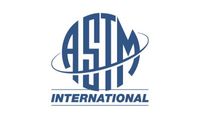
- Home
- Companies
- ASTM International
- Articles
- Determination of Deformation Properties ...
Determination of Deformation Properties of Collapsible Soils
Courtesy of ASTM International
Mechanical properties of loessial soils are the functions of their in-situ physical conditions, geological history, as well as actual load distribution at the site of interest. It is well known that the bearing capacity of loesses and loessial soils decreases with an increase in their porosity and water content. Physical and mechanical properties of soils can be determined by different laboratory and field methods. Technical and economic advantages and/or disadvantages of utilizing these methods are discussed. Field and laboratory test results are presented in tabulated form and analyzed. The paper describes the technique of plate load tests performed at three construction sites located near the city of Odessa (Soviet Union). Information obtained during the field tests was compared with results of soil tests carried out in the laboratory on hand-carved (undisturbed!) specimens.
-
Most popular related searches
Customer comments
No comments were found for Determination of Deformation Properties of Collapsible Soils. Be the first to comment!
